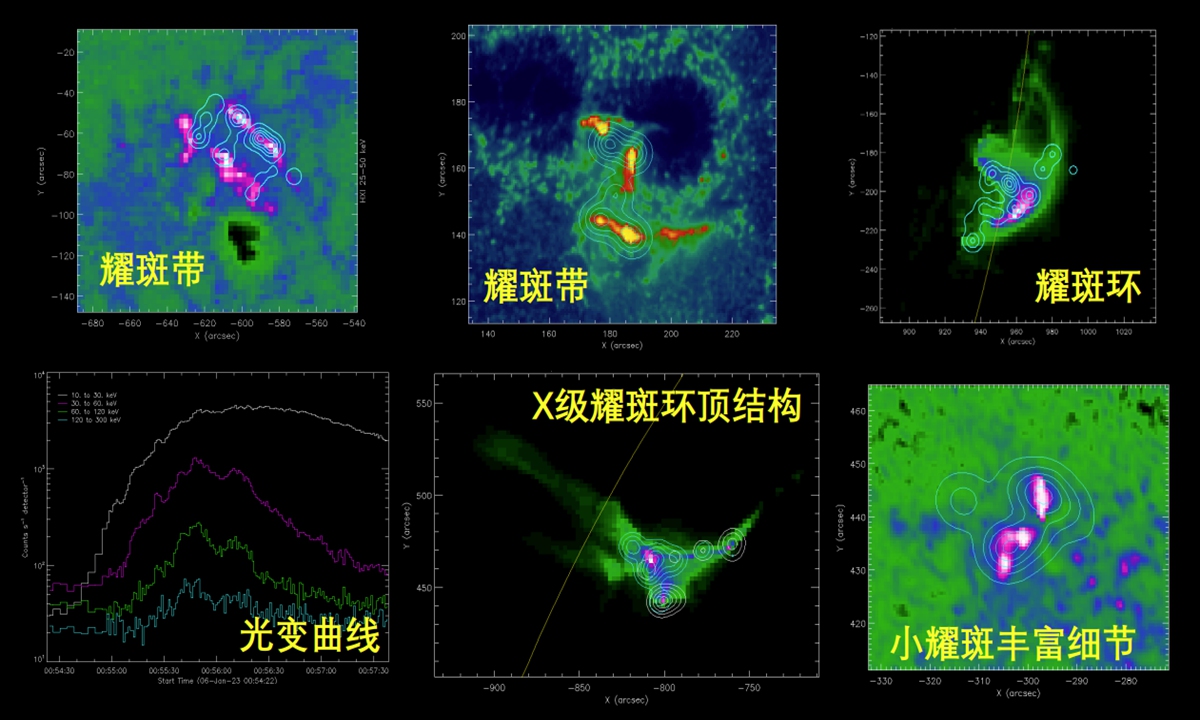
Photo: Purple Mountain Observatory, CAS
China has held a special meeting from Tuesday to Wednesday to announce the launch of sharing of data collected by the country's first comprehensive solar probe Kuafu-1, with program's leading scientist welcoming global cooperation on solar studies.
Nearly 400 solar physicists from 25 countries around the world including those from the US, the UK, Japan and Russia, participated in the two-day symposium online, the Global Times learned from the Kuafu-1's developer and operator Nanjing-based Purple Mountain Observatory under the Chinese Academy of Sciences (CAS,) on Wednesday.
The symposium was held virtually with sub-events including those specific to China-America and China-Europe cooperation. Researchers from countries including Ukraine, North Korea and Bangladesh also joined the briefing.
Named after Kuafu, a giant in Chinese mythology who indefatigably chased sun, the comprehensive solar probe was launched on October 9, 2022 from Jiuquan Satellite Launch Center in Northwest China's Gansu Province via a Long March 2D carrier rocket.
After six-month testing in orbit, Kuafu-1 has attained approximately 80 terabytes of raw observational data, and it is ready to share data to the global researchers, Purple Mountain Observatory told the Global Times on Wednesday.
At the two-day meeting, the Kuafu-1 scientific research team introduced to the global researchers the in-orbit operation and condition of the satellite and in particular, the usage of the observation data by the three payload onboard the satellite and of the software processing of such data, Gan Weiqun, the program leader and a research fellow with the Purple Mountain Observatory, told the Global Times.
Gan announced at the meeting that starting from April 1, data collected by the Lyman-alpha telescope (LST), Hard X-ray telescope (HXT) and Full-disk solar vector MagnetoGraph (FMG,) on the satellite will be open and available to global researchers in addition to real-time data gathered in the future.
Gan extended a welcome to global collaborators to take advantage of Kuafu-1 data.
It is an international norm in the solar physics to open-source solar probe data. Kuafu-1's real-time observation data will be open to domestic and foreign researchers indiscriminately to achieve data sharing, Gan noted.
In the future, while providing good service, we will strive to promote and encourage solar physicists at home and abroad to widely use the Kuafu-1 data to carry out cutting-edge researches, strengthen international cooperation, so that we can achieve great results and findings faster than we would have been otherwise able, Gan said.
Kuafu-1 marks a world's first probe to observe the solar magnetic field, solar flares and titanic blasts, and deploy a corresponding payload combination onboard all at once. It is also a world's first in deploying a near-Earth satellite platform to detect the all-solar vector magnetic field and the non-thermal radiation of solar flares, as well as to simultaneously observe images, heliostat formation and coronal propagation of coronal mass ejections.
Also marking a world's first, the Kuafu-1 realized simultaneous imaging of the full heliosphere and the corona via the LST.
With a designed service life of four years, Kuafu-1 will operate in the Earth's polar orbit some 720 kilometers above ground level, so that it will be capable of conducting 24-hour continuous observation directly of sun, with only a short communication delay, according to Gan.




